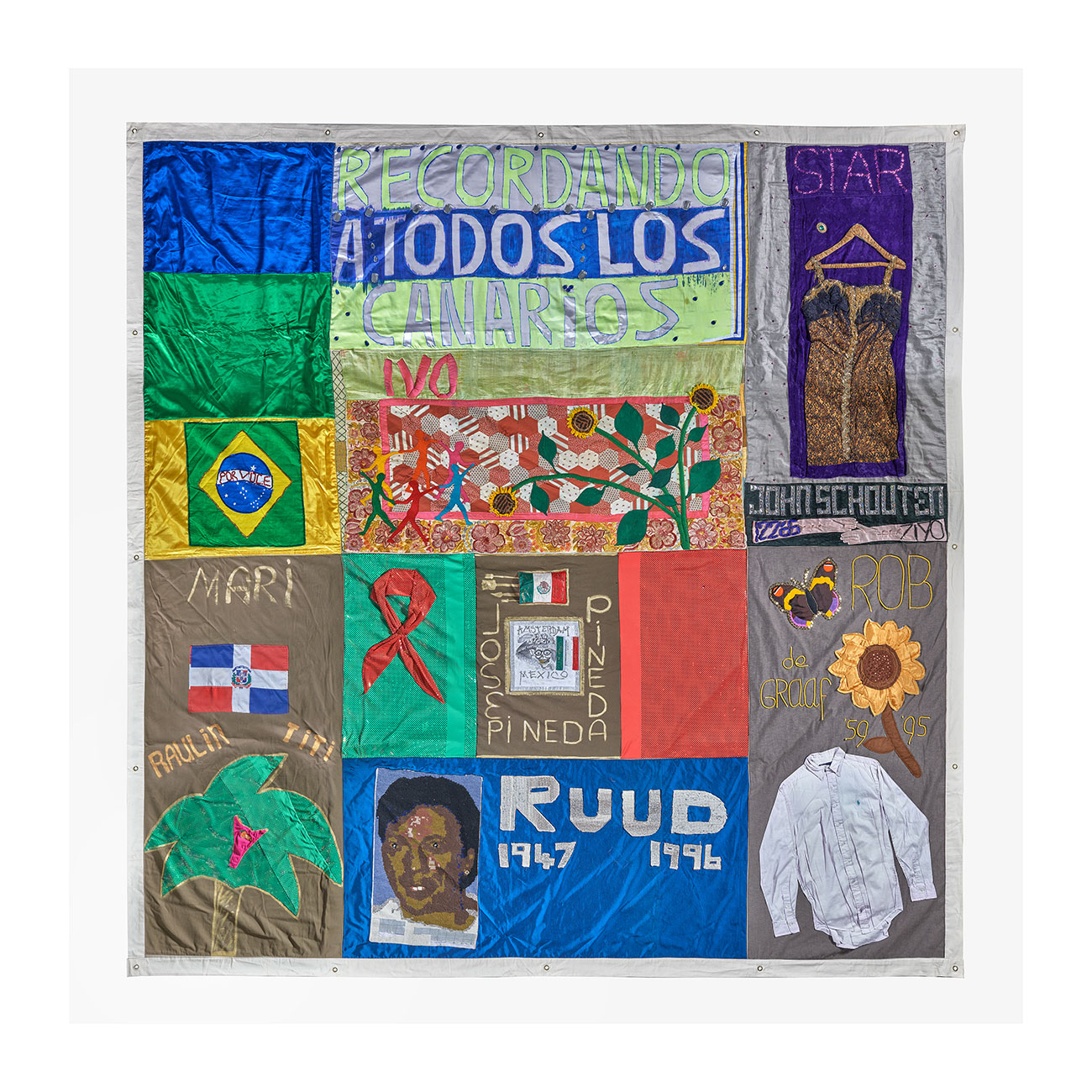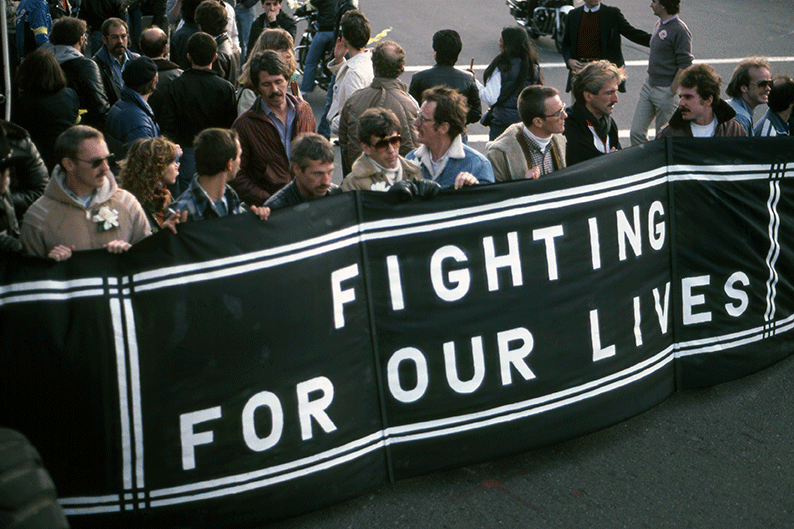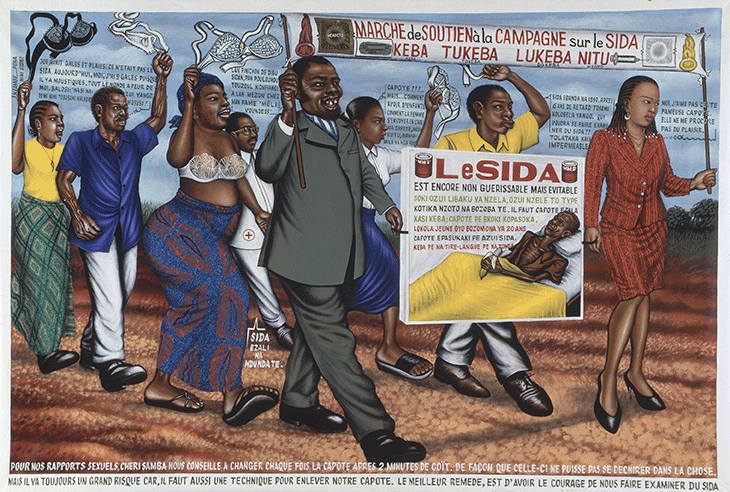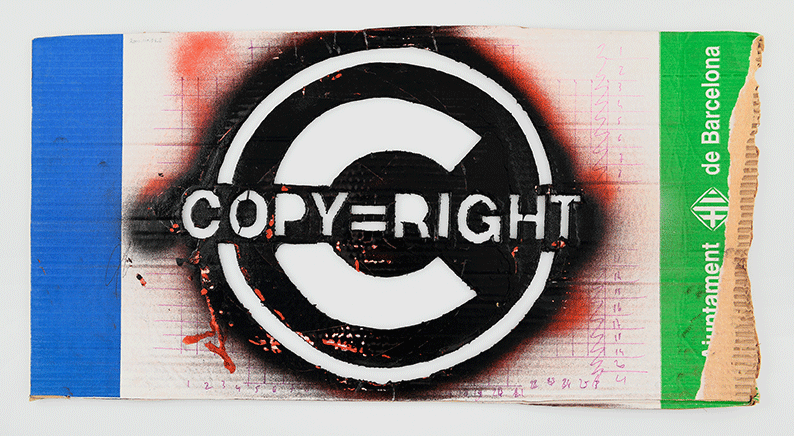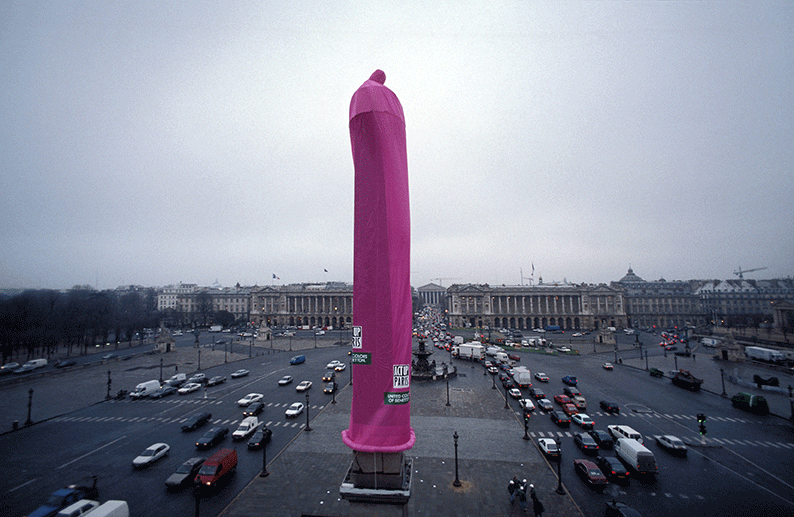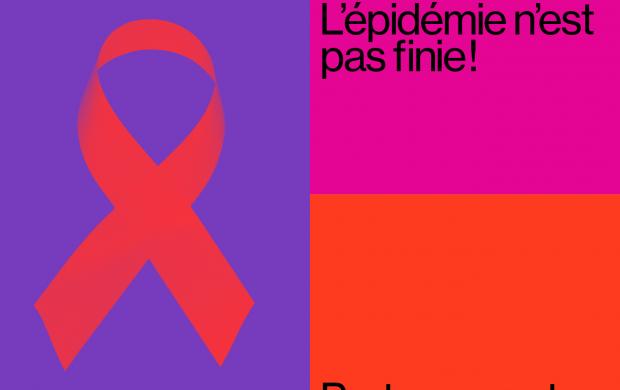HIV/Aids
The epidemic isn’t over!
|
From Wednesday 15 December 2021 to Monday 2 May 2022
The exhibition “HIV/Aids, the epidemic is not over!” traces the social and political history of Aids
The exhibition “HIV/Aids, the epidemic is not over!” traces the social and political history of Aids. The fight against the epidemic has revealed situations of inequality and stigmatisation, giving rise to numerous demands for access to treatment, care, improved rights, and the visibility of affected people and groups. By offering both a retrospective and contemporary look, the exhibition defines itself as a contribution to the fight against HIV/AIDS. Putting Aids in the museum does not mean burying it; on the contrary, it is a reaffirmation of its topicality, as shown by the title of the exhibition, which echoes a historic Act Up slogan: “the epidemic is not over!” In July 1981, the first newspaper article about Aids was published in the New York Times, mentioning cases of cancer among homosexual men. It was not until 1983 that the hypothesis of an exclusively homosexual disease (”gay cancer”) was rejected, but the “4Hs” were singled out: gay men, heroin addicts, hemophiliacs, and Haitians. The victim was also the accused and their stigmatisation included proposals for quarantine, disproportionate means of protection, and the reprobation of affected social groups, who were deemed responsible. At the same time, the designation of these “at-risk groups” would go on to durably and invisibly mask other situations of exposure to the virus, as evidenced by women’s activism and initiatives to take children and adolescents into account. The epidemic was a shock to society just as the disease or HIV status were shocks to those affected. The exhibition returns to the impact of this event in individual and collective trajectories.
The fight against Aids has taken place at both local and global levels and has addressed many aspects of the epidemic — scientific, medical, but also in the streets, demanding action and attention from public authorities and rejecting the stigmatization of patients and communities. The development of more effective treatments starting in 1996 marked a breakthrough. We see people being “reborn” thanks to the strengthening of their immune system and the weakening of viral replication in the body, despite a restrictive treatment and numerous side effects. But access to drugs is very uneven worldwide and the opening up of intellectual property regimes became a major demand in the late 1990s.
From the 1980s to the present day, the epidemic has given rise to many hypotheses about its origin and much talk about the means to its end. The exhibition will shed light on these different narratives, allowing us to look back on past knowledge and present understandings.
Finally, the exhibition questions the legacy of the epidemic, what it revealed, the advances it made possible, mainly in terms of rights, but also the setbacks and stagnation. It offers an assessment of the struggles and their victories as well as the obstacles still hindering the progress they promote. By evoking the “political lessons” of Aids, it opens up to questions of major topicality, whether they concern social responses to epidemics and the management of “health crises”, or the way in which other chronic diseases have benefited or not from this upheaval in the power relationship between doctors and patients, for which the fight against the virus has also been one of their demands.
The exhibition “HIV/Aids, the epidemic is not over” is an opportunity to showcase the exceptional collection of Mucem’s collections on the theme of HIV/Aids built up at the beginning of the 2000s. Thanks to research, banners, leaflets, posters, community magazines, brochures, and prevention materials, activist objects, clothing, badges, red ribbons, as well as medicines, photographs, and works of art were collected from numerous organisations fighting HIV/Aids, enabling Mucem to build up a point-of-reference collection on a European scale. Numerous photographs, important works of art, and loans from private individuals interact with this collection to allow visitors to be immersed in the social history of the fight against the epidemic.
Scenography: Amélie Lauret and Émilie Delanne, Græphème
Graphic design: Cécilia Génard and Alma Gromard
The curation of this exhibition :
- Stéphane Abriol (anthropologist, CNRS-Cerlis, Université Paris-Descartes)
- Christophe Broqua (anthropologist, CNRS-IMAF)
- Renaud Chantraine (anthropologist, EHESS)
- Caroline Chenu (research and collections officer, the Mucem)
- Vincent Douris (operational research collections officer, Sidaction)
- Françoise Loux (anthropologist, research director, CNRS)
- Florent Molle (custodian for heritage, the Mucem and the Musée d’art moderne et contemporain de Saint-Etienne Métropole)
- Sandrine Musso (anthropologist, AMU, CNE-Ehess)
And a monitoring committee made up of several dozen people concerned in different ways by the epidemic (people living with HIV, NGOs, carers, activists, researchers, etc), with the participation of Lorenzo Jacques (intern).
-
Interview with Florent Molle, co-curator of the exhibition
-
Mucem (M.) This exhibition is the result of long, in-depth work carried out by the Mucem for several years on the theme of HIV/Aids. Why choose to talk to us about Aids today?
Florent Molle (F.M.) The exhibition “HIV/Aids, the epidemic is not over” is in fact the culmination of a story that began nearly thirty years ago at the Musée national des Arts et Traditions Populaires (ATP), with which a CNRS laboratory, the Centre d’ethnologie française, was associated. As early as 1994, debates were organised between researchers, carers, people living with HIV and NGOs, and in 2002 the first collection began. This was a possible role for the museum, that of bringing the memory of the excluded, in this case Aids patients, into the national consciousness. In this respect, it was a question of continuing to put into practice the wish of Georges Henri Rivière, founder of the ATP museum (of which the Mucem is its heir): “Give a voice to those who do not have one”.
In 2015, the project for an exhibition on this theme began to take shape. A steering committee was formed whose members are now the curators. In 2017, we opened up this group to all those interested in taking part in the exhibition design project. A monitoring committee, a collective with a loose outline, made up of people affected by the epidemic in different ways joined us – in particular people living with HIV, carers, activists and NGOs. We also organised a series of six study days between 2017 and 2019 to enable us to build a common base of shared knowledge.
Today, as the whole world looks at the trends of the Covid-19 epidemic, it is important to remember that the HIV epidemic is not over. It continues to affect marginalised populations and the fight to end Aids continues.M. How can a virus be spoken about in a museum setting?
F.M. The exhibition is not about the virus as such, but about the social upheaval caused by its emergence in the early 1980s. We will show that the virus has actually been present in humans since the 1920s and that it spread throughout the world before belatedly attracting media attention because it was spreading in a particular community – that of gay men in the United States.
Because of its modes of transmission, from the outset HIV spread among previously stigmatised minorities. Stigma was concentrated in gay men, drug users, sex workers, migrants, and others in addition to the burden of the disease. But the response was swift. This is perhaps what marks out Aids the most: affected people and groups organised themselves to defend themselves and to engage in a struggle that made it a “political epidemic”.
Finally, the exhibition poses several questions to examine these upheavals: do hospitals have a better capacity to receive patients? Have doctor-patient relations improved on an interpersonal level? Has comprehensive care really become the norm? Have care until death and mourning rituals really been transformed? Has therapeutic research changed? Is the concept of “health democracy” valid? Do patients really take part today in decisions that concern them? Are state benefits such as disabled adult allowance properly allocated? Is support for the most vulnerable the norm?
Looking back at the social history of the disease and the social mobilisations that were organised against Aids serves as a reminder that the fight is far from over.M. Which objects in the exhibition do you see as particularly important?
F.M. Personally, I have a lot of admiration for the Names Project panel donated in 2018 to the Mucem by the “Dutch Names Project” foundation, the Dutch offshoot of the Aids Memorial Quilt, created in the United States in 1987. The Aids Memorial Quilt is a community monument made up of textile panels that name and commemorate those who died of Aids. Each patchwork is a combination of 8 individual coffin-sized panels, individually created and sewn together to form a square. Each panel honours a person who has died of Aids. Volunteers from communities affected by the epidemic are involved in making the panels and displaying the patchworks as part of a mourning ritual.
During the preparation of the exhibition, we also collected notebooks containing “confidential letters” written by prostitutes on the Champs-Elysées and the Parisian ring roads at the beginning of the 1990s to testify to the conditions in which they worked and to call on public authorities to take responsibility for their working conditions and health. It is a rare archive and a very powerful cry.
Finally, I could stop at a sign, collected in 2002 and produced by the NGO Migrants against AIDS, on which is written: “We survived slavery. We survived colonisation. We survived forced migration. We will survive Aids.” The message is very powerful and places Aids within the context of a long history of post-colonial domination.M. This exhibition brought together a large number of players, particularly NGOs, involved in the fight against the epidemic...
F.M. We worked with many people concerned by the disease, grouped together in a collective that we called the “monitoring committee”. We also mobilised many players through a series of study days. All these people contributed to the project. The objects, works and photographs that we show along the visit route were chosen in relation to the monitoring committee, which took part in the various stages of the project’s design. The testimony of some of them can be found in the exhibition thanks to the texts they wrote, but also in the catalogue where we wanted to give a voice to affected persons with the aim of prioritising first-person accounts of this very special story.
M. The strap of the exhibition title warns that “the epidemic is not over”. Where exactly are we in the fight against Aids?
F.M. Today, there is an infection every 19 seconds and a death every 46 seconds in a world where 38 million people live with HIV.
While the fight against Aids has led to undeniable progress, such as the 100% reimbursement of medical expenses for people living with HIV, the regularisation of foreigners suffering from serious illnesses, and more recently the lifting of the ban on funeral care for people who have died of Aids, there are still battles that remain to be won. Also, has the situation of drug users, migrants, sex workers, transgender people and prisoners really improved in the last ten, twenty or thirty years?
All activities and events (in French)
Partners and sponsors
With the support of
In partnership
